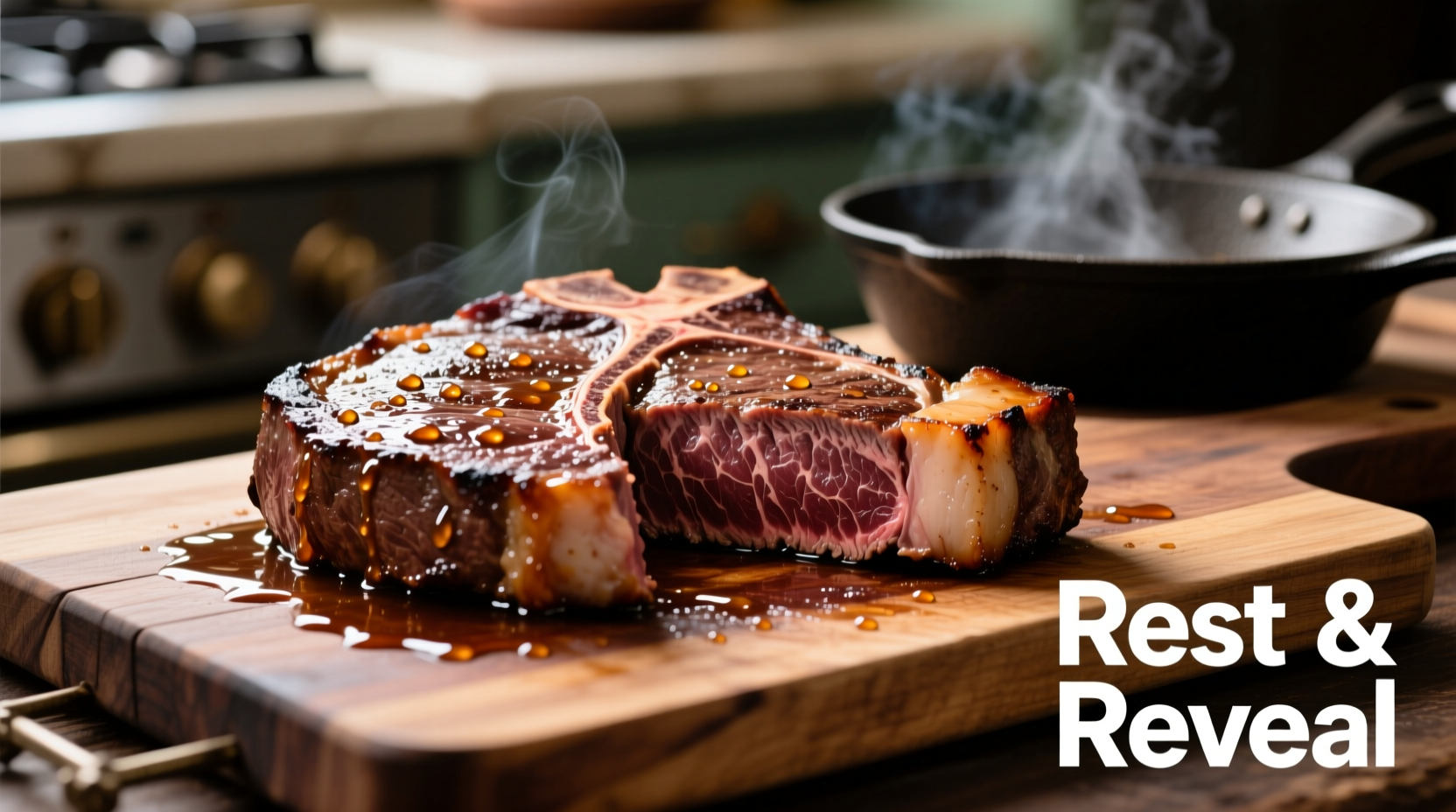Let your steak rest for 5-10 minutes after cooking for optimal juiciness and texture. Thicker cuts (over 1.5 inches) benefit from 10 minutes, while thinner cuts need at least 5 minutes. This allows muscle fibers to relax and juices to redistribute throughout the meat.
The Science Behind Steak Resting: Why Timing Matters
When you slice into a freshly cooked steak, you've probably noticed juices flooding your cutting board. This isn't just messy—it represents lost flavor and texture. Understanding the why behind resting transforms your cooking from guesswork to precision.
During cooking, heat causes muscle fibers to contract, pushing juices toward the steak's center. Immediately cutting interrupts this process, resulting in up to 30% juice loss according to research from the American Meat Science Association. Proper resting allows these fibers to relax gradually, redistributing those precious juices evenly throughout the cut.
Resting Time Guidelines by Steak Type
| Steak Thickness | Cut Type | Recommended Rest Time | Temperature Drop |
|---|---|---|---|
| Under 1 inch | Skirt, Flank | 3-5 minutes | 5-8°F |
| 1-1.5 inches | Strip, Ribeye | 5-7 minutes | 8-12°F |
| Over 1.5 inches | Tomahawk, Porterhouse | 8-12 minutes | 10-15°F |
| Any thickness | Ground meat patties | 2-3 minutes | 3-5°F |
This fact-based timing approach considers both thickness and cut type—critical factors often overlooked in generic advice. Thicker steaks require longer resting because heat penetrates deeper, creating more pronounced juice migration toward the center.
Professional Resting Techniques That Actually Work
Resting isn't just about waiting—it's an active process requiring proper technique:
- Transfer immediately: Move steak from heat source to a wire rack (not directly onto a plate)
- Loose tenting: Cover loosely with foil to retain warmth without trapping steam
- Strategic positioning: Place thicker end slightly elevated to encourage even redistribution
- Temperature monitoring: Use an instant-read thermometer to track carryover cooking
Contrary to popular belief, complete foil wrapping creates steam that softens your hard-earned crust. The USDA Food Safety and Inspection Service confirms that proper resting actually enhances food safety by allowing continued thermal processing during carryover cooking.

Avoid These Common Resting Mistakes
Even with correct timing, these errors sabotage your results:
- The premature poke test: Pressing your steak releases juices before they've redistributed
- Cutting too soon: Wait until surface moisture disappears (about 70% of resting time)
- Ignoring ambient temperature: In cold kitchens, add 1-2 minutes to recommended times
- Resting on cutting board: Wood absorbs juices; use a warmed plate instead
Professional chefs at the Culinary Institute of America emphasize that resting duration should correlate with cooking intensity—steaks cooked at extremely high temperatures (like reverse-seared) need longer rest periods due to more dramatic internal temperature gradients.
How to Know When Your Steak Is Perfectly Rested
Forget timers—develop these visual and tactile cues:
- Surface appearance: Juices stop beading on the surface
- Texture response: Light finger press yields slightly, then springs back
- Internal temperature: Drops to 5-10°F below target doneness
- Cutting test: First slice shows minimal juice runoff
When executed properly, resting transforms your steak from merely cooked to exceptional. The difference between a good steak and a memorable one often comes down to those critical minutes off the heat. Remember: resting isn't passive waiting—it's the final stage of cooking where flavor and texture reach their peak.











 浙公网安备
33010002000092号
浙公网安备
33010002000092号 浙B2-20120091-4
浙B2-20120091-4